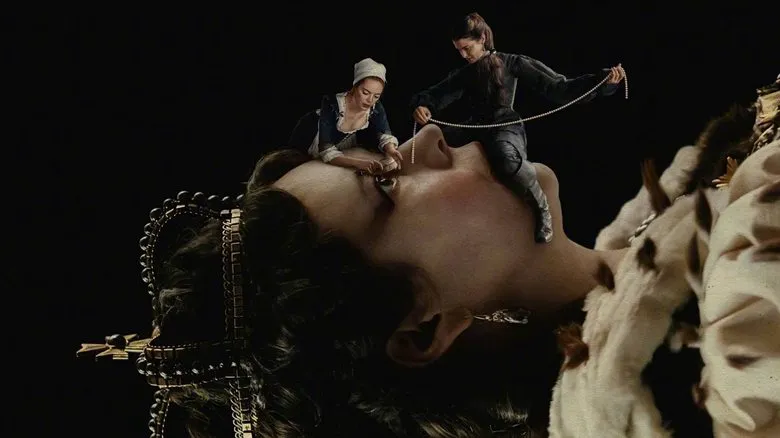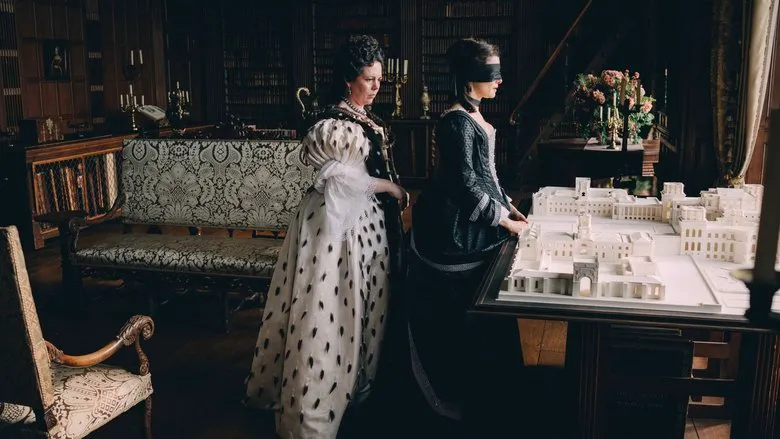Toni Morrison’s “Beloved”: A Haunting Exploration of Slavery’s Legacy
Toni Morrison, a pivotal figure in contemporary American literature, born in Ohio in 1931, left her editing role at Random House to fully embrace her writing career. It was while curating “The Black Book” that she discovered the spark for her acclaimed novel, “Beloved.”
The Genesis of “Beloved”: From “The Black Book” to Fiction
“The Black Book” vividly depicts the true ordeal of Margaret Garner, a slave who escaped and made the heartbreaking decision to end her daughter’s life rather than see her returned to slavery. This tragedy inspired the narrative of “Beloved.”
 The powerful imagery of “Beloved” captures the horrors of slavery.
The powerful imagery of “Beloved” captures the horrors of slavery.
Synopsis: A Ghostly Return and the Weight of the Past
“Beloved” unfolds in 1855, telling the story of Sethe, a former slave who escapes a Kentucky plantation while pregnant and seeks refuge at 124 Bluestone Road in Cincinnati, Ohio, with Baby Suggs, her husband’s mother. Here, she gives birth to Beloved. When slave owners pursue her, Sethe commits a devastating act: killing her infant daughter to save her from slavery’s horrors.
Years later, Paul D, a fellow escaped slave, enters Sethe’s life, and they begin to build a relationship. However, the past refuses to be buried. Eighteen years after her death, Beloved materializes, seeking the love she was denied. Her obsession with Sethe isolates and manipulates her, driving Paul D away. The novel culminates with Sethe’s near descent into madness as she struggles to cope with her overwhelming guilt and trauma. Ultimately, Paul D offers a glimmer of hope, reminding Sethe, “You your best thing, Sethe. You are.”
 The movie adaptation of “Beloved” brought the story to a wider audience.
The movie adaptation of “Beloved” brought the story to a wider audience.
Exploring the Enduring Scars of Slavery’s Trauma
Morrison’s poignant retelling of Margaret Garner’s story elevates the narrative beyond historical recounting, becoming a profound exploration of the collective trauma that slavery inflicted on an entire race. She fearlessly explores the physical and psychological torments that slaves endured, shining a light on the lasting humiliation, suffering, and rage caused by the institution. The novel serves as an unflinching testament to the psychological scars that refuse to heal with time, underscoring the painful truth that the abolition of slavery did not erase its enduring legacy. As a Black woman, Morrison lends her voice to a people whose pain has often been silenced, asserting the fundamental truth that freedom, dignity, and love are not the exclusive rights of any one group but the inherent birthright of all humanity.
 Sethe’s character embodies the struggles of formerly enslaved people.
Sethe’s character embodies the struggles of formerly enslaved people.
A Chronicle of Suffering and the Relentless Pursuit of Freedom
“Beloved” stands as a poignant portrayal of the Black experience—a powerful chronicle of suffering interwoven with the relentless pursuit of freedom. Sethe and countless others existed in a world devoid of liberty, deprived of even the most fundamental right: the right to parent their children. As Morrison writes, “Any white man could take your whole self for anything that came to mind.” The harrowing experiences of slavery cast a long shadow, trapping them in a past that refused to release its grip, even after emancipation.
The haunting of 124 Bluestone Road, the return of Beloved, and the arrival of Paul D serve as constant reminders of this agonizing history, bringing both joy and fresh wounds to the surface. Beloved’s physical return compels Sethe to confront the overwhelming guilt she bears as a mother, offering a bittersweet form of redemption that simultaneously fulfills a deep longing and inflicts profound emotional damage. “Your love is too thick,” Paul D observes, to which Sethe replies, “Love is or it ain’t. Thin love ain’t love at all.” This unwavering love, both for her children and for the very concept of freedom, fueled her unthinkable act of infanticide, signifying her resolute control over her own destiny and the Black community’s determination to achieve freedom at any cost.
 A scene from “Beloved” that shows Sethe’s inner conflict.
A scene from “Beloved” that shows Sethe’s inner conflict.
Humanizing The Inhumanity: A Personal Gateway to Slavery
In “Beloved,” Morrison masterfully transforms the abstract concept of the dehumanizing effects of slavery into a tangible, deeply personal experience. By focusing on the intimate world of 124 Bluestone Road, she lays bare the sacrifices and struggles of a once-silenced people, giving them back their voice as they redefine their own worth and identity. Instead of relying on sentimental depictions of suffering, Morrison uses carefully measured prose, achieving a profound, clear-eyed understanding that transcends fleeting emotional responses. This is possible due to her poetic mastery with language and expert storytelling skills that facilitate her ability to move beyond emotional display but rationally engage in objective observation which expands the novel’s intellectual and penetrating capacity which thoroughly engages the reader.
Despite writing from the specific vantage point of her race, Morrison’s vision intelligently eclipses the limited scope of racial concerns to incorporate broader and universal topics. She deftly presents acts of kindness and support between white and Black people such as Amy Denver or the Bodwin Siblings. However, amongst the Black characters, she included instances of estrangement and jealousy. Morrison rises above the limitation boundaries concerning topics about race, she effectively ventures into the exploration of timeless concepts like good versus evil, love versus hate, and the multilayered interplay between memory and chronological time therefore heightening readers engagement and insight overall regarding her intellectual capacity.